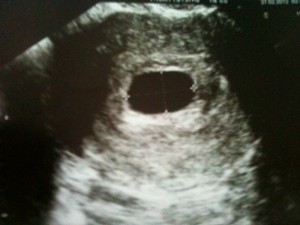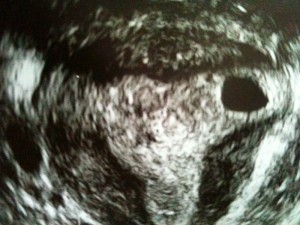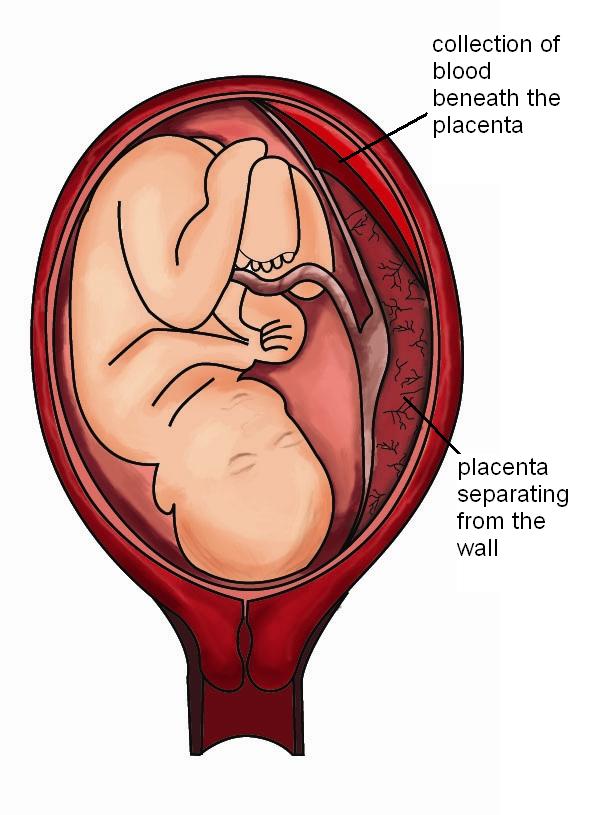A Blighted ovum is the reason behind half of all miscarriages that occur in the first trimester of pregnancy. Learn all about this abnormal condition and get detailed information on its causes, symptoms, diagnosis and treatment.
What is a Blighted ovum?
Page Contents
- 1 What is a Blighted ovum?
- 2 Blighted ovum ICD 9 Code
- 3 Blighted ovum Incidence
- 4 Blighted ovum Causes
- 5 Blighted ovum Symptoms
- 6 Blighted ovum Diagnosis
- 7 Blighted ovum Treatment
- 8 Blighted ovum Prognosis
- 9 Blighted ovum Complications
- 10 Blighted ovum Prevention
- 11 Blighted ovum Misdiagnosis
- 12 Pregnancy after Blighted ovum
- 13 Blighted ovum Pictures
It is an abnormal condition that occurs in the very early stages of pregnancy or the first trimester (initial three months of pregnancy). It may develop in the first few weeks of pregnancy, often even before a woman knows she is pregnant.
The condition is also known as “Anembryonic gestation.”
Blighted ovum ICD 9 Code
The ICD 9 Code for this health issue is 631.
Blighted ovum Incidence
The condition is reported to occur in 16-30% of all pregnancies. According to 50-60% of all miscarriages in the first trimester occur due to abnormalities in chromosome that occur during that stage of pregnancy.
Blighted ovum Causes
The problem occurs when a placenta and membrane develops from a fertilized egg but no embryo originates. This only means that the egg does not fully develop into a baby. According to doctors, the condition arises due to abnormalities of chromosome in the fertilized egg – possibly associated to Trisomies 16 and 22. In a 1993 study, chromosomal abnormalities were detected in 67% of miscarriages occurring due to Anembryonic gestation. The condition may also result from poor quality of egg or sperm or an abnormal division of cells. The problem may also occur due to advanced age as the condition has been found to be more common in older women.
Although the exact mechanism is not fully known, the disorder is believed to occur due to an aberration of nature. When a sperm fertilizes an egg, the division of its cells begins to occur. In normal cases, some of the cells develop into the embryo while others grow into membranes and placenta. Sometimes, however, the cells that were originally meant to turn into the embryo fail to develop completely – possibly due to too few or too many chromosomes. The other cells have a normal growth and develop into placenta and membranes. Thus, the gestational sac continues to grow bigger inside the uterus and the placenta begins to form. It is only after some time that the body recognizes the absence of a baby inside the sac.
Blighted ovum Symptoms
The condition usually leads to a miscarriage. The body of a woman reacts to the abnormalities in chromosome and stops the pregnancy. The fetus does not develop into a healthy infant.
In many cases, a woman with this health issue shows signs of a full-blown pregnancy and does not exhibit any symptoms of miscarriage. If a Blighted ovum goes wrong naturally, a woman shows typical symptoms of miscarriage.
Women with this condition may experience various signs of pregnancy, such as a late or missed menstrual period, and also a positive test for their maternity. The hCG (Human Chorionic Gonadotropin) is a hormone produced by the placenta after implantation. In women with Blighted ovum, the level of this hormone can continue to increase as the placenta may grow on for a short while even in the absence of an embryo.
As hCG levels keep on increasing in such women, they are usually confident of having a normal pregnancy. Even without a baby, the placenta can continue to enlarge in size. The pregnancy hormones can also keep on rising, thus making women sure of being pregnant. It is not until an ultrasound examination has been made that an empty gestational sac is noticed.
In some cases, however, women with Blighted ovum might suffer from health problems like bleeding, minor vaginal spotting or minor abdominal cramps. These are the signs of a miscarriage. Although not all cases of bleeding during the first trimester are symptoms of a miscarriage, it is better to visit a doctor as soon as such problems are experienced during early pregnancy.
Blighted ovum Diagnosis
When small in size, the gestational sac in case of a blighted ovum looks normal from the outside. It cannot be differentiated from pregnancy sacs observed I normal women during the first trimester. The sac must be enlarged enough so that one can detect the absence of normal elements in the embryo.
The condition is generally discovered when a woman begins to show signs of miscarriage in the first three months of her pregnancy (first trimester). It may also be detected during an ultrasound exam at some time in the first trimester. If a woman does not exhibit any symptoms of miscarriage, the problem may remain undetected until the early stages of the second trimester when a heart rate monitor does not detect any heartbeat of a baby.
An ultrasound examination is usually the preferred method of diagnosis for this disorder. In an ultrasound examination, the image of a Blighted ovum generally shows only a gestational sac. In some cases, however, an egg sac and a fetal pole might also be noticed. But true Blighted ova do not contain either of these structures. Only a void can be seen in place of where the embryo should have been.
An analysis of hCG levels is generally not useful. This is due to the fact that the levels may rise in the same way as in normal pregnancies.
The criteria for the diagnosis of a Blighted ovum are:
- Failure to detect an embryo in a pregnancy sac, which is at least 20 mm in size, through a Transabdominal ultrasound examination.
- Failure to detect an embryo in a pregnancy sac that is around 18mm or more in size through a Transvaginal ultrasound.
- Failure to detect a yolk sac in a pregnancy sac that is 13mm or more in size.
There might also be other indications, such as:
- Irregularities in the outline of the gestational sac
- Absent or incomplete decidual reaction
- Presence of fluid in the sac
Blighted ovum Treatment
Many women with this problem may opt for a D&C (Dilation and Curettage) as opting for natural recovery might result in weeks of waiting. D&C is an operative procedure in which surgeons dilate the cervix and scrapes the uterine lining mildly to empty the uterus of its contents. This surgical process is also often referred to as ERPC (Evacuation of Retained Products of Conception). It can be carried out as a medical induction of miscarriage or as a day procedure. D&C may help resolve the problem completely and also help a mother emotionally disconnect herself from the pregnancy. It might also be useful if she wants a pathologist to analyze the tissues and deduce the actual reason of the miscarriage.
If surgery is not preferred by patients, doctors might use a medicine (like Misoprostol) on an outpatient basis. The drug may, however, take a few days to make the body expel all the tissues. The use of this medication may give rise to side effects, such as bleeding. With surgery as well as medications, there is risk of abdominal cramps or pain. These can be treated.
Some women prefer to let the body expel the tissues naturally, without the use of operative procedure or medicines. Although this is a personal decision, it is best to consult a doctor in this regard. Many women opt for a natural miscarriage. Those going the natural way should be monitored by a doctor until the completion of their miscarriage. An woman option for natural miscarriage is likely to experience typical symptoms of a stillbirth.
Blighted ovum Prognosis
The periods begin once again after the miscarriage occurs. Although there are no physical problems, the condition might lead to emotional trauma and be a cause of much anxiety during the next pregnancy. Most women are assured only when physicians confirm a heartbeat in a heart rate monitor. It is only then that the pregnancy is confirmed and the possibility of a successful delivery is reported to be much better.
Blighted ovum Complications
As mentioned earlier, this condition does not lead to any health issues. However, many affected women are found to suffer from emotional trauma due to a miscarriage. Although there is not an actual existence of a baby, the fact that there has been an unsuccessful pregnancy and a conception is seen as the main cause of grief among sufferers. Such emotional scars usually heal after a successful pregnancy in future.
Blighted ovum Prevention
Unfortunately, this condition cannot be prevented. Couples might seek genetic testing in case of multiple early pregnancy losses. However, this problem often occurs only once in life and occurs again only rarely. Following cases of miscarriage due to this problem, doctors usually recommend patients to wait for at least 1-3 menstrual cycles before attempting to conceive again.
A deficiency in the progesterone hormone is believed to be one of the causes of miscarriage in the early stages of pregnancy. Use of progesterone supplements has been found to reduce the risk of early pregnancy loss in women suffering from recurrent cases of miscarriage. Consult with your doctor and test the level of your progesterone as soon as possible, if you believe a deficiency of the hormone to be the underlying cause.
Blighted ovum Misdiagnosis
In a few cases, pregnant women are misdiagnosed with this condition. In many cases, women who go for an ultrasound scan before the 8th week of their pregnancy are misdiagnosed of early pregnancy failure. If the dates of pregnancy are even slightly off, a pregnancy that is capable of being successful can often be misdiagnosed for a Blighted ovum.
If you are pregnant, you can follow these tips to avoid being wrongly diagnosed of this health issue.
- Wait till the 11th or 12th week of your pregnancy before going for an ultrasound scan. However, this is not recommended if you are experiencing abdominal pain or other complications such as infection. An earlier ultrasound scan might be extremely necessary in such cases.
- Do not bother about changing hCG levels. Alteration in the level of this hormone is a poor indicator of blighted ovum.
- Do not worry excessively about the symptoms that you might be experiencing during pregnancy.
- Many healthcare providers believe that it is better to have a miscarriage before ten weeks of pregnancy. However, it is safer to wait as most misdiagnosed blighted ova are observed by ten weeks.
- If you are not having any complications and are unsure about terminating your pregnancy, get a second opinion. Consult another doctor to know whether he or she seconds the opinion of the first.
Pregnancy after Blighted ovum
Most women with this problem wish to provide their body and mind with some rest before opting for pregnancy again. It is usually only after sometime that a woman feels emotionally ready to become pregnant again. After having a Blighted ovum, women are likely to have their menstrual period again in four to six weeks following their miscarriage or removal of tissues.
While doctors feel that one can try becoming pregnant after the first period, it is safer to wait until a complete menstrual cycle has occurred.
Blighted ovum Pictures
Two images of a Blighted ovum are given below. The first image displays the condition in the 8+4 week and shows the gestational measuring 17 by 11 mm and located close to the center of the uterus. It is quite smaller than it should have been at that stage of pregnancy. The second image shows the condition in the 7+4 week and displays a pregnancy sac measuring 13 mm which is located much near to the fallopian tube. The measurement is appropriate to a gestational age of about 5 weeks.
Picture 1 – Blighted ovum
Picture 2 – Blighted ovum Image
If you are experiencing pain and cramps in the abdomen, get in touch with a physician as soon as possible. It is not advisable to neglect your health in pregnancy and the sooner you address the issues, the better it will be for you. If you are diagnosed with a Blighted ovum, do not hurry into a miscarriage. Take your time and get a second opinion from another doctor. Take your decision only after a second confirmation.
References:
http://en.wikipedia.org/wiki/Anembryonic_gestation
http://www.mayoclinic.com/health/blighted-ovum/AN00418
http://www.americanpregnancy.org/pregnancycomplications/blightedovum.html
http://www.babyhopes.com/articles/blighted-ovum.html



